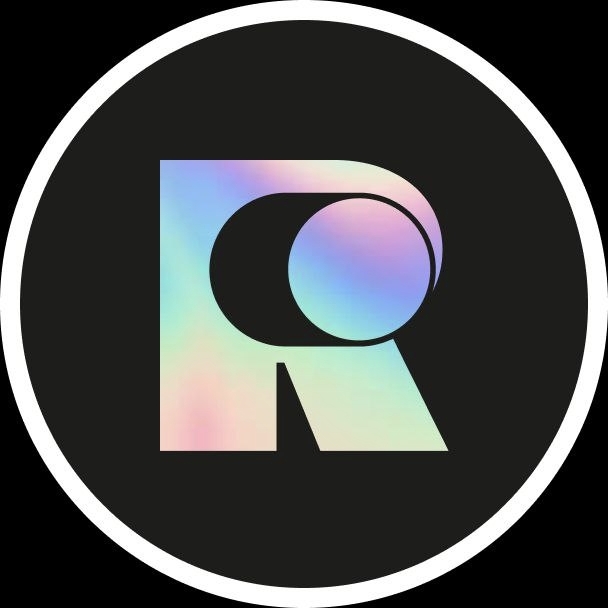
Coin-related
Price calculator
Price history
Price prediction
Technical analysis
Coin buying guide
Crypto category
Profit calculator
What is Moonbeam (GLMR)?
Moonbeam basic info
What Is Moonbeam?
Moonbeam is a cross-chain smart contract platform that operates as a parachain on the Polkadot network. This innovative platform has garnered significant attention in the crypto space for its ability to facilitate seamless interoperability between various blockchains, including Ethereum. Developers can effortlessly build decentralized applications (DApps) on Moonbeam, which can function across multiple chains, enhancing the scope and functionality of these applications.
Founded in January 2020, Moonbeam remained relatively unnoticed until it secured a grant from the Web3 Foundation later that year. This financial boost propelled the platform into the limelight, culminating in the successful launch of its testnet in September 2020. Moonbeam officially went live on the Polkadot network on January 11, 2022, marking a significant milestone in its journey to foster a decentralized, interconnected web of blockchains.
Moonbeam's architecture is based on the Substrate framework, which allows for a high degree of customization, including forkless upgrades and the implementation of features such as on-chain governance and Ethereum Virtual Machine (EVM) compatibility. This compatibility means that projects initially developed on Ethereum can be transferred to Moonbeam with minimal alterations, saving time and resources. Moreover, Moonbeam has a sister parachain called Moonriver, which serves as a testing ground for smart contracts and codes before they are deployed on the main Moonbeam network.
Resources
Official Documents: https://docs.moonbeam.network/
Official Website: https://moonbeam.network/
How Does Moonbeam Work?
Moonbeam operates using a delegated proof-of-stake (DPoS) consensus mechanism, which not only ensures a more energy-efficient operation compared to proof-of-work blockchains like Bitcoin but also fosters a robust and growing ecosystem of DApps. The platform utilizes the Ethereum Virtual Machine (EVM) to execute smart contracts, enabling developers familiar with Ethereum to easily transition and build DApps on Moonbeam.
At the core of Moonbeam's functionality is its ability to facilitate cross-chain integrations, a critical step towards achieving a decentralized web that relies on blockchain-based systems rather than centralized networks. Through Moonbeam, various blockchains can communicate and exchange information swiftly and effortlessly, addressing the long-standing issue of blockchain interoperability that has been a barrier to mass adoption.
Developers have access to a broad array of tools and services, including APIs, bridges, oracles, and Web3 wallets, which enhance the development process and enable smooth migration of assets between different chains. Furthermore, Moonbeam supports multiple programming languages that compile down to EVM bytecode, providing developers with a familiar environment to work in and encouraging migration to the network.
What Is GLMR Token?
The GLMR token is the native utility token of the Moonbeam platform, playing a pivotal role in the network's operations. GLMR tokens are utilized to pay transaction fees, vote on governance proposals, and participate in liquidity mining programs on the Moonbeam network. The token facilitates network security and powers smart contracts, thereby being an essential component in maintaining the platform's decentralized infrastructure.
Moonbeam's Impact on Finance
Moonbeam stands as a beacon of innovation in the financial landscape, showcasing the potential of a multi-chain network in fostering a decentralized financial ecosystem. Its interoperability feature breaks the barriers of isolated blockchain networks, paving the way for a connected internet of blockchains that can communicate and transact seamlessly.
Furthermore, Moonbeam's platform offers a fertile ground for the development and expansion of decentralized finance (DeFi) applications. By facilitating easy migration of Ethereum-based projects and enhancing scalability, Moonbeam could potentially drive down costs and increase the reach of existing smart contracts and projects. Its growing community and partnerships with prominent entities in the crypto space, including Chainlink and SushiSwap, indicate a promising trajectory for Moonbeam, potentially revolutionizing the financial sector with its unique offerings.
What Determines Moonbeam's Price?
In the dynamic world of cryptocurrency markets, understanding the factors that influence the Moonbeam price is crucial for both beginners and seasoned cryptocurrency enthusiasts. A myriad of elements come into play when determining the cryptocurrency price, including market demand, the overall sentiment in the cryptocurrency news, and developments in cryptocurrency regulation. As we venture into 2023 and beyond, experts and influencers are keenly analyzing the cryptocurrency charts and trends to provide a nuanced Moonbeam cryptocurrency price prediction. Keeping abreast of the latest cryptocurrency events and insights from cryptocurrency experts can offer a clearer picture of the potential trajectory of Moonbeam's value.
Cryptocurrency exchanges such as Bitget play a significant role in shaping the Moonbeam price. The dynamics of supply and demand on these platforms, coupled with cryptocurrency trading strategies adopted by traders, influence the price fluctuations. Moreover, the broader cryptocurrency market trends and crypto market analysis conducted by cryptocurrency enthusiasts and experts provide a deeper understanding of the potential growth and risks associated with investing in Moonbeam. As the crypto community speculates about the best crypto investment for 2023, many are eyeing platforms like Moonbeam that are fostering cryptocurrency adoption through their innovative approaches to blockchain technology.
Investing in Moonbeam, like any other cryptocurrency, comes with its share of challenges. Cryptocurrency risks such as market volatility and potential cryptocurrency scams are aspects that investors need to be wary of. Effective crypto portfolio management is essential to navigate the complex landscape and mitigate risks. Furthermore, understanding the nuances of cryptocurrency tax and ensuring adherence to evolving cryptocurrency regulation is vital for a secure investment experience. As we witness an uptick in cryptocurrency events and discussions led by cryptocurrency influencers, potential investors are urged to conduct thorough research and analysis to ascertain if Moonbeam aligns with their investment goals and if it is a good investment in the long run.
GLMR supply and tokenomics
Uniqueness
Moonbeam offers an Ethereum-like environment on top of Substrate (rather than a Geth-based solution). This lets developers redeploy their existing smart contracts easily, using the same tools and integrations they already use, but also take advantage of the modern Substrate framework on which all Polkadot parachains are built.
The Moonbeam network makes it possible for developers with Solidity or Vyper-based smart contracts to "go multi-chain" and extend their influence into the Polkadot ecosystem. Polkadot’s blockchain ensures seamless sharing of workloads on a new layer.
Through Moonbeam, developers can port their existing Ethereum DApps to Polkadot or easily create new permissionless decentralized applications (dApps) using familiar Ethereum development tools. The tools on Moonbeam ensure that there is minimal change when front-end dApps are moved between chains.
By using Moonbeam, Ethereum developers (which is the largest market of existing blockchain developers) will be able to bypass the scalability challenges due to the expense and constraints of the Ethereum network.
Token utility
As a decentralized smart contract platform, Moonbeam requires the Glimmer token to function. This token is central to the design of Moonbeam and cannot be removed without sacrificing essential functionality. Some of the uses of the Glimmer token on Moonbeam include:
- Supporting the gas metering of smart contract execution
- Incentivizing collators and powering the mechanics around the creation of a decentralized node infrastructure on which the platform can run
- Facilitating the on-chain governance mechanism including proposing referenda, electing council members, voting, etc
- Paying for transaction fees on the network
Moonbeam targets a 5% annual inflation rate and, as such, has an uncapped token supply.
The purpose of inflation in Moonbeam is to pay for ongoing security needs of the network. The primary security budget items are to pay for a parachain slot on an ongoing basis, and to incentivize collators to provide collation (block production) services to support the Moonbeam network. Of the 5% inflation, 1% goes towards incentivizing collators and 1.5% goes to the parachain bond reserve to accumulate on chain funds to pay for a parachain slot in perpetuity. The remaining 2.5% is for users that stake their GLMR tokens and help power the collator selection process.
Fees on Moonbeam related to transactions and smart contract execution are handled in two ways. 80% of the spent fees are burned, which acts as a deflationary force and accrues value to existing GLMR holders based on increased utilization of the network. 20% of the spent fees go to the on chain treasury which can be allocated via onchain governance to projects and initiatives which further adoption and engagement with the network.
Links
What is the development prospect and future value of GLMR?
The market value of GLMR currently stands at $82.49M, and its market ranking is #356. The value of GLMR is not widely recognized by the market. When the bull market comes, the market value of GLMR may have great growth potential.
As a new type of currency with innovative technology and unique use cases, GLMR has broad market potential and significant room for development. The distinctiveness and appeal of GLMR may attract the interest of specific groups, thereby driving up its market value.
Is GLMR worth investing or holding? How to buy GLMR from a crypto exchange?
How to get Moonbeam through other methods?
What is Moonbeam used for and how to use Moonbeam?
Moonbeam Wiki
Learn about other cryptos









































